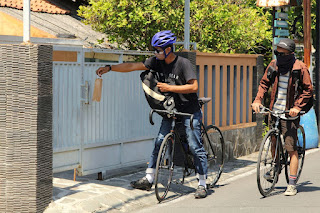Lockdowns and other restrictions induced by COVID-19 have left people dependent on deliveries for everything from pharmaceutical s to pizza.
Here in New York, as in much of the developed world, Amazon trucks and electric bicycles with delivery boxes have become ubiquitous. A shrinking but still significant number of restaurant and store delivery workers, however, still use bicycles that have only the riders’ legs as their power source.
It seems that the less-developed and poorer parts of the world depend to an even greater degree on regular pedal bicycle. Those are also areas that, because they have fewer resources, have been even more devastated by the pandemic. They also tend to have tighter restrictions on people’s movements and on businesses because their hospitals are even more overburdened than those in wealthier areas.
Just about everything I’ve mentioned in my previous paragraph could be used to describe the situation in Semarang. This city of three million (roughly the same as Chicago) is one of the worst-hit areas of Indonesia , which has become Asia’s epicenter of the epidemic.
Such places also tend to rely to a greater degree on volunteers. They include 35-year-old Arrahman Surya Atmaja, who delivers food, prescriptions and other items to isolated residents as part of the volunteer delivery service he started in April.
 |
| Arrahman Surya Abakan, left, with another volunteer .Phoro by Budi Purvanto, for Reuters. |
He says his most common deliveries include medicines or vitamins he picks up via WhatsApp or Instagram. He and other volunteers have had to lift their bikes over barricades blocking off “red zones” with high rates of infection. “Maybe because we are helping the community, it will somehow boost our immunity,” he joked.
While most of his runs are to residences, he unwittingly went to an ICU ward. “I got scared, but my feelings went away when I remembered I only want to help.” He added that he and other cyclists try to make contactless deliveries.